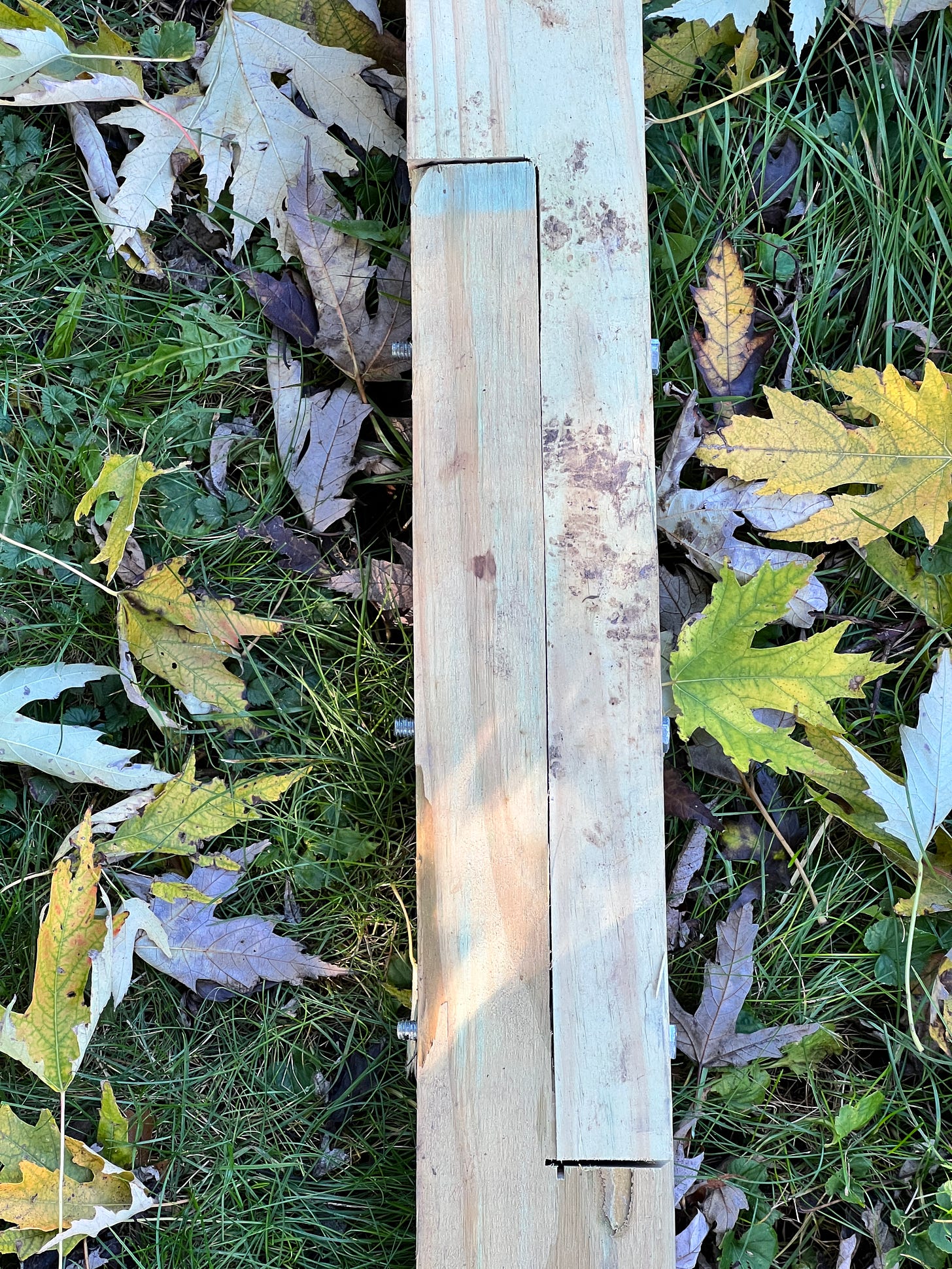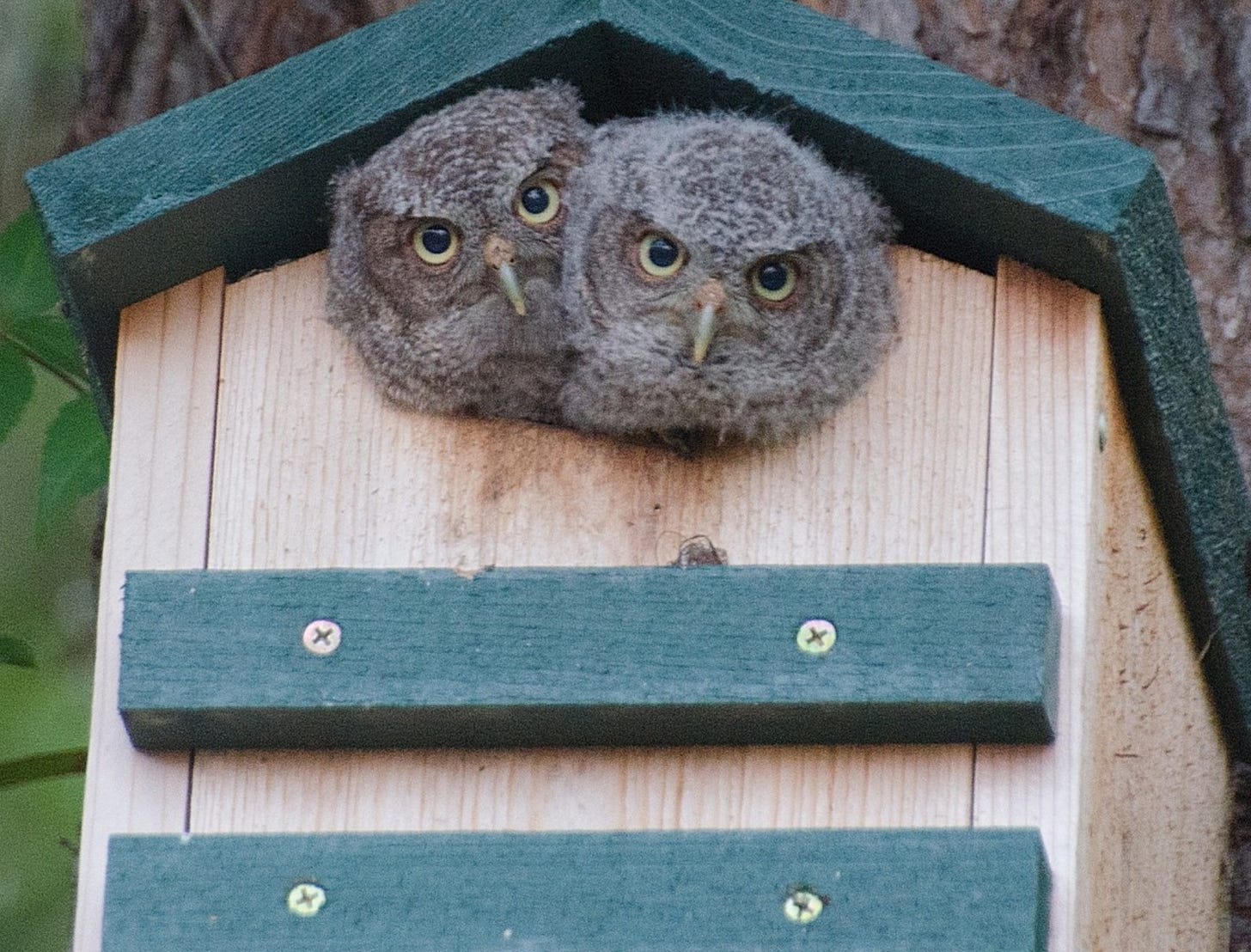
Discover more from Easy By Nature
We are inviting a little mystery into our lives, a mystery known as Megascops asio or the eastern screech owl. These tiny owls live in wooded areas in eastern North America. They roost and nest in natural cavities and nest boxes and have adapted to life in urban areas where they readily habituate to people.
We committed to putting up a proper nest box and baffle on a pole in our back yard. We have had nest boxes up in less-than-ideal locations for years, and they have not worked well … primarily due to the fact that screech owls will not use a box squirrels can access, and we have a lot of squirrels! We also tended to put our boxes too low. Screech owls prefer to nest in cavities or boxes 10-18 feet off the ground.

Now that we have a nest box and baffle installed on a 4 x 4“ pole in an ideal location, I am happy to report that it was much easier than expected. For me, it also has the benefit of being a group project. My dad built the nest box, and a friend added an extension onto the post to make it 15 feet tall. My son dug a 2.5-foot hole and helped mount the baffle and the box. The entire process took a couple of hours. If you would like to build your own nest box, the Cornell Lab of Ornithology has detailed plans on their Nest Watch website.
Screech owls will roost in nest boxes over the winter and nest in them if conditions are favorable. Creating favorable conditions entails having an open woodland habitat that supports a diverse selection of small prey for the owls.
They perch and pounce on a wide variety of insects and animals. Their diet varies by location and time of year, but, in general, they hunt for large insects, worms, tadpoles, small fish, frogs, small mammals, and birds.
Mice, voles, and birds make up the bulk of their diet. This means if you want to have screech owls around, you need to have habitat for birds and small mammals. Providing for birds and small mammals requires cover, giving up a little control, and letting the grass and flowers grow. Diverse native plants are ideal, but letting patches of grass in your yard grow up will also suffice.
Our local Audubon chapter maintains nest boxes for Screech owls in our local parks, and we get to observe the owls all winter. They sit in the nest box entrance on sunny afternoons. Once they get used to people walking by on the trails, they will watch you walk by. Some owls will even stay put when you stand under the box.
They react more strongly if another screech owl enters their territory, often singing at the intruder. I imagine millions of owl renditions of West Side Story playing out every night as the owls defend their territories through singing. Instead of the Jets and Sharks, it is the Reds and Grays.
Once a male screech owl defends his territory, he sings to attract a mate. The resulting pair bond lasts for their lifetime. They nest in early spring and raise 3-5 young per year. Nest failure is common, so having multiple nesting locations available can help them re-nest if necessary.
Researchers have found examples of mutualism at work in screech owl nests. Some owls catch blind snakes and deliver them to their nests, where they live in the bottom of the owl box, under the litter, and eat the insects that could potentially compete with the owls for cached food. Ant colonies also set up their homes in owl boxes and help to defend the owls’ nests by attacking predators that come too close.
If the owls succeed in raising young, the fledgling owls eventually enter the wide world and perch in the leaves near their nest box. They will quickly learn to adopt various postures that help them survive. These postures include learning to hide by sitting straight with ear tufts raised and their wings held tight against their body. They are minimizing their avian form and relying on the pattern in their feathers to mimic tree bark and lichens.
If an intruder approaches closely, the owls may turn sideways and raise one wing to cover their face below their eyes. I think of this as the Flamenco Posture. I wonder if they stamp their feet to enhance the effect of their raised wing, signaling that they will soon be gone in a flash.
What if all of life is meant to be a beautiful dance, and the owls are showing us how to be? How to dance through life? I want to occupy that healing, leafy green world of soft light, dancing shadows, and secret rhythms that incite joyful movement. Let the frantic rushing about, screens, and noisy world of internal combustion fade away and allow your heart to take up residence with the singing and dancing birds.
Always in the distance
the sound of cars is passing
on the road, that simplest form
going only two ways,
both ways away. And I
have been there in that going.
But now I rest and am
apart, a part of the form
of the woods always arriving
from all directions home,
this cell of wild sound,
the hush of the trees, singers
hidden among the leaves-
a form whose history is old,
needful, unknown, and bright
as the history of the stars
that tremble in the sky at night
like leaves of a great tree.
Wendell Berry
Subscribe to Easy By Nature
Exploration and insights into re-wilding your yard, neighborhood, and spirit.
























It’s fascinating to learn about the mutualism between owls, snakes, and ants. I had never considered that a nest might be a cooperative home. You always teach us something new, Bill.
Lovely! Thank you for sharing the owls with us. They are wonderful, and I hope your nest box will be successful so you can enjoy them as neighbors. We have barred owls in the woods on our property, and I am always so thrilled by our chance encounters. Their songs are so beautiful, one of my favorite soundtracks of our winter nights. On those rare moments I spot one in the branches, I freeze - and just enjoy basking in their gaze. They seem to consider me so thoughtfully and patiently, slowly assessing me before deciding whether to stay or fly :) It’s a rather special feeling to sit under a barred owl’s stare!